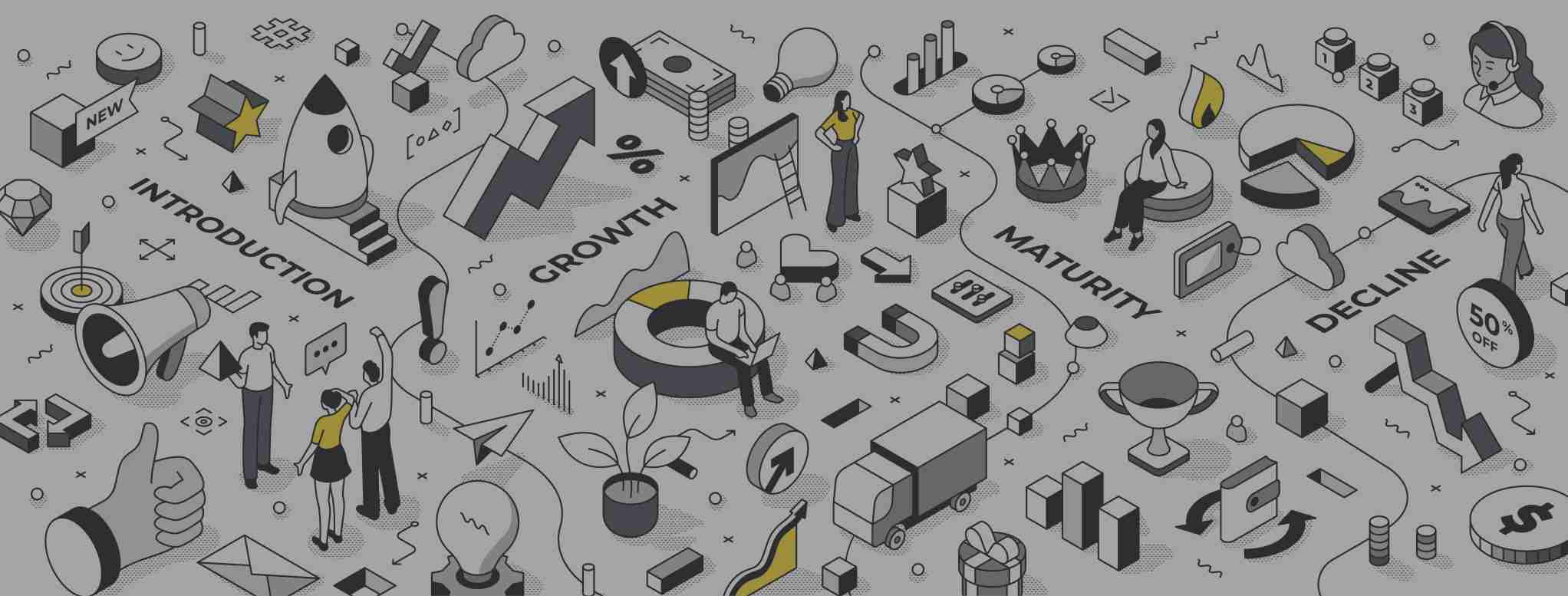Working in a start-up can feel like building the plane as it flies. This is especially true when focused on your B2B go to market (GTM). We think GTM is broken and we’re on a mission to fix it.
There are several mistakes we see when working with clients, particularly when it comes to fintech and SaaS marketing efforts, and more specifically, some of the foundational elements of your strategy.
No one cares about your features and benefits
Technical founders in particular, take note. We say this because this can feel like a safe space, a comfort zone. You’ve created these features, they're awesome, and you want to talk about them. You can. But you can’t lead with them.
Why? Listing out what your product does doesn’t actually tell your buyer how you change their world. It also doesn’t differentiate you. If you and your competitors have similar features with only slight differences, buyers get overwhelmed and ultimately inertia kicks in. 40-60% of deals end up in indecision, even after prospects expressed intent to buy.
What is that indecision fueled by? One major piece is outcome uncertainty, where buyers fear they won’t achieve their end goal. If that’s where your target customers are, you’re not communicating your value properly.
So how do you fix it?
It starts with understanding the difference between positioning and messaging. According to April Dunford, the preeminent expert on positioning, “Positioning defines how your product is a leader at delivering something that a well-defined set of customers cares a lot about."
Most importantly, positioning is an internal exercise, which also includes your value for customers, competitive alternatives, target market segmentation, market category and importantly - your features and benefits. Messaging on the other hand, is the external extension of your positioning, which showcases your unique value, what outcomes are possible because of your solution and what pain points you are solving.
Your targets want to know things like, “How long is going to take me to get to that destination I need to be at once I adopt your offering?” and, “How are you helping me communicate your value to the rest of my leadership team?”
Once you answer fundamental - and emotional-based - questions like these, then you can get into features of benefits, but they are by no means the thing that you use to generate leads or encourage a conversation. No one's buying a list of IT integrations, they're buying a transformation.
You are not creating a category
Creating a category is not recommended unless you have millions and millions in expendable cash - and it certainly isn’t a marketing strategy. We’ve worked with a few start-ups who came to us convinced that they were unique enough to do this; they weren’t. Most aren’t.
Take martech as an example: There are over 15,000 products in 500+ categories - all of which are variations on a theme. Some have AI, some don’t, none of them are completely unique.
SaaS and fintech start-up founders seem to think that building a category is some sort of shortcut to success, when in actuality it is time-consuming and expensive because most of the time you have to educate a market. That’s a lot of time and resources spent at the top of the funnel.
You cannot create a unique name and say it’s a new category because you have a different feature or benefit. If you've got different features to something else, that's your USP.
You are not the hero of your story
Louder, for those at the back! Companies of all sizes are guilty of this one, ourselves included at times! And founders in particular are like, “Well we are amazing. The product is fantastic. We’re being clear on what we do and why we do it.”
But you know what - that’s all about you. And that’s why when you come to a digital marketing agency for start-ups like us and say, “Our marketing isn’t working. When we do get opportunities they aren’t converting.” It’s often because you aren’t making your potential customers the hero of your story.
You are always Yoda. It’s your job to make your customer Luke Skywalker. You are the guide that shows them the way and allows them to achieve their destiny.
And this means that you also need to know your target audience so that you can tailor your messaging to their needs, pain points and ideal outcomes. Which means understanding your personas and ideal customer profile (ICP).
We recently had a client tell us the reason she went with BIAS was because we were the only agency that delivered a vision of how she was going to revolutionise her business. Not us, her. We then enabled her to sell that account-based marketing vision to her leadership by creating an asset (that anybody can download).
We showed her the path of transformation, we put her at the centre of it and we empowered her with knowledge and information to sell up, lock in the budget and look good doing so.
If you need help positioning your product or service and more clearly communicating your value, check out ARISE.





